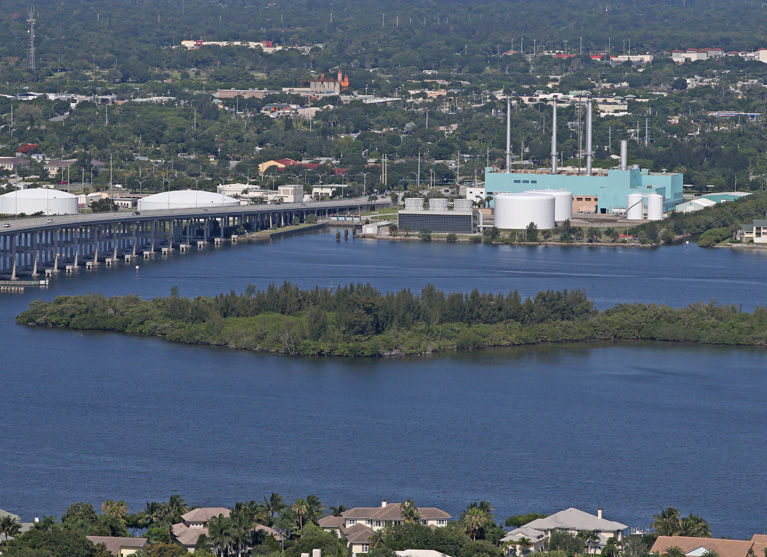
VERO BEACH — The cooling towers at Vero’s Big Blue power plant are slated for demolition in the next two weeks, the first phase of clearing the riverfront gateway to the island for redevelopment that could change the look and feel of the city at some point in the future.
At the same time, partially due to the plant closing, electric bills of smaller users will be $2 less each month.
Vero Beach-based South Bay Construction will dismantle the towers at a cost of $58,000. As part of its contract, the company will gain ownership of plant components, which it can sell for reuse or scrap. If the city had retained ownership of the dismantled towers’ parts and marketed the materials itself, the demolition job would have been billed at nearly $200,000.
In addition to the cooling towers’ removal, the City Council on Tuesday was asked to approve of a $396,000 contract for cleanup of asbestos and mercury from the aging power plant buildings to prepare for further demolition.
It’s expected to take two to three months for the cooling towers to be completely removed from the southeast quadrant of the power plant property on the shore of the lagoon to “create green space for future use,” as stated in a memo to the City Council. Vero officials have begun soliciting public input about what should be done with the power plant site once it’s cleared of utility equipment, but no decisions have been made.
City Manager Jim O’Connor said the $2 per month savings on the “purchased power” portion of electric bills, which amounts to about a 1.7 percent decrease in electric bills, “is scheduled to go into effect with the bills sent out on June 15.”
The decision to reduce rates was the result of a quarterly rate-sufficiency study, which showed that, due to the shutdown of the power plant and other operational efficiencies, Vero electric could operate on less revenue and still make ends meet.
Vero recently renegotiated its 20-year bulk power contract with Orlando Utilities Commission to reduce prices and allow Vero to buy power on the open market a few years sooner. That deal, which went into effect last fall, was held out by Vero’s attorneys and consultants as the utility’s best hope of becoming price-competitive.
At the time the deal was brokered, critics speculated the it would not net much savings for ratepayers and O’Connor did not credit the entire June rate decrease to the new contract, saying, “The OUC contract does play a role, but it is a combination of all efforts to reduce the rates,” including getting rid of power plant operation expenses.
The 158-megawatt generating plant was constructed in the early 1960s, with the first General Electric unit going online in November 1961. It replaced the city’s old diesel plant near the railroad tracks as Vero’s main source of power, supplemented decades later by nuclear and coal power from Florida Power & Light’s St. Lucie nuclear plant and OUC’s Stanton 1 and Stanton 2 coal plants, purchased via Vero’s costly membership in the Florida Municipal Power Agency.
The main building of the Vero power plant encases an integrated substation and switching equipment, so it can’t be completely demolished without providing a place to relocate that equipment.



